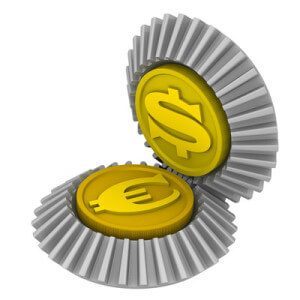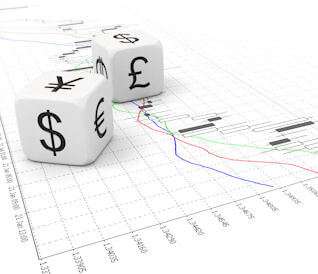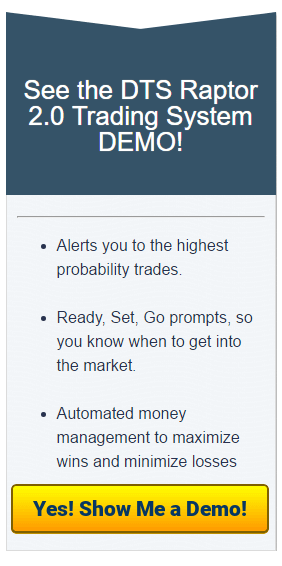Day Trading Tips and Tricks
NinjaTrader Forex Trading Support
Forex 101: Currency Pairs
Forex is hot again! Lately, we’ve received a lot of different emails asking some common questions about Forex trading by folks either new to trading or just new to using NinjaTrader in the Forex market.
Now that NinjaTrader is investing a lot of resources to establish a strong presence in the Foreign currency trading markets, all we can say is lookout Mt4!
To ensure there is plenty of material to support NinjaTrader Forex traders in their journey towards successful, consistent FX trading, Indicator Warehouse has implemented a broad range of FX trading support resources and a Forex and added a Forex trading coach to the team.
Today’s topic covers one of the most basic building blocks of forex: the currency pair itself. Sure, there are lots of them. But what do they mean? Which ones should you trade? Are there any easy ones? Or are they all the same? Let’s find out!
What Is a Currency Pair?
Currency Pairs
The “pairing” of one currency against another to obtain a market value for either.
Example: The price of the Eur/Usd means comparing how many Euros ONE US Dollar can purchase OR vice versa. Eur/Usd= 1.3000 means that ONE Euro = $1.30 USD OR ONE Dollar USD = Approx 0.77 Euros
The currency at the beginning of the pair is essentially the primary currency we are using on the chart. For example on a price chart for the Eur/Usd, if the price goes up, that means the Euro is getting stronger against the dollar, and if the price goes down, the Euro is getting weaker against the dollar.
Major Pairs
- Eur/Usd (Euro vs. US Dollar)
- GBP/Usd (Great Britain Pound vs. US Dollar)
- Aud/Usd (Australian Dollar vs. US Dollar)
- Usd/Chf (US Dollar vs. Swiss Franc)
- Usd/Jpy (US dollar vs. the Japanese Yen)
- Eur/GBP (Euro vs. British Pound)
- Usd/Cad (US Dollar vs. Canadian Dollar)
Any two currencies can be compared against each other in this fashion to find the value of one currency against another, but they DO have a standard format.
Examples: Eur/Aud, Eur/Cad, Gbp/Jpy, Aud/Cad, Gbp/Aud, Eur/Jpy, Aud/Jpy etc.
So now that we understand what a currency pair is, let’s talk about different aspects of what makes them “tick”:
Currency Pair Attributes
Popularity and Usage
From one pair to the next there is a massive amount of difference in just how much they are traded. This varies from the incredible volumes found on the Eur/Usd and Gbp/Usd, to the very mild and low volumes found on exotic pairs like the Eur/Dkk and Nzd/Try. As traders we should always attempt to focus our attention primarily on higher volume pairs, as they are both more understandable from a technical analysis point of view, but also tend to have much smoother moves and more predictable price action.
Spread
This is the difference between bid and ask price for buying or selling. The higher the spread, the more transaction cost the pair has to trade overall and also the further the pair has to move in the winning direction just to break even. In general, the lowest spreads are found in the most heavily traded pairs during the heaviest volume hours. Although on longer-term trades the impact of spread tends to be reduced, on smaller trades it can be a significant cost of “doing business”.
Swap
As the world turns, various financial centers start their day and hours later close up shop while the next set of financial centers open their doors so to speak. This keeps trading going 24-hours a day in the currency market. Since your money is necessarily “travelling around the globe” throughout the day as you hold a trade open, institutions are required to pay or collect the interest rate differential between the two currencies over the period of 24-hours. If you are holding long a pair that whose first currency in the pair (Like Aud in Aud/Usd) has a higher interest rate than the second currency in the pair, you will collect a swap on “rollover” each day. If you are short the same pair, you will have to pay a rollover swap each day. Keep in mind that the greater the two countries interest rate differential is, the higher the swap will be. This can be used either in a investment sense as a “carry trade” if you hold the higher interest rate pair long, or as a transaction cost that will eat into your profits.
Active Sessions
Each currency pair tends to be more active during certain sessions than others. Some currency pairs don’t move at all during their slower sessions while the most popular and heavily traded pairs tend to be active all the time, with some slower times. So depending on which session you decide to trade, you should focus on the pairs that move the most within that given session. As a general rule, ALL pairs move well during US session, MOST pairs move well during London session and, only a FEW pairs move during the Asian session, notably Yen-crosses, Aud-crosses and Nzd-crosses.
Most Traded and Popular Pairs
Now that we know a little more about some facets of currency pairs, in general, let’s talk about a few of the most traded and popular pairs and how they affect your trading and their nuances.
Eur/Usd
This pair is THE biggest pair in forex in terms of volume and visibility. It compares the entire European Union against the world’s single largest economy (at the time of writing this at least), the USA. For this reason, the Euro trades well virtually all periods of the day, there is TONS of coverage and analysis available for it and should be at least one of the most significant pairs any trader can focus on. It works very well with technical analysis and beginners should always keep an eye on this pair when beginning trading.
Gbp/Usd
This pair is similar to the Eur/Usd in volume and visibility, but differs in one very important respect: volatility. Although this pair tends to correlate very highly with the Euro, it moves considerably more for each swing by comparison. Stops need to be bigger and errors can be found sooner. Of course, with small a spread and a great price action, this pair is excellent to trade once you have some experience. Although I don’t recommend this pair to beginners due to volatility and price action, this pair can provide excellent opportunities to traders with expertise and confidence.
Eur/Gbp
This pair has a much smaller daily range than either the Pound or Euro (since they are positively correlated to such a high degree). That being said, it still makes very nice technical moves. I highly recommend this pair to beginners since the movements tend to be gentle, and stops can be very small. It also lends itself exceptionally well to technical analysis and tends to respond to basic analytic techniques. One surprise many traders find initially when trading this pair is that the per $ value of each pip is higher than almost any other pair for the same lot size so keep that in mind when calculating risk as smaller lots may have to be used to achieve the same $$-risked amount. That is easily balanced with the small daily range, and hence small stops you can use on this pair.
Aud/Usd
A fantastic pair since it moves a moderate amount carries an extremely high interest rate (great for the carry trade if kept long) compared to most other currencies, and has really seen increased interest and liquidity over the last few years. Indeed, a great pair for beginners and experienced traders alike.
Yen-Crosses
These pairs can be extremely volatile (ESPECIALLY the Gbp/Jpy) but can also produce very profitable moves, since they tend to really stretch and move when in a trending environment. The fastest pips I tend to make, I make on a Yen-related pair. They lend themselves well to technical analysis and can even be traded quite nicely during the Asian session, a time when most other pairs just sit there. Not everyone can trade London or NY session each day, and the Yens give us options for Asian session as well as trading wonderfully during the two other major sessions.
Canadian-Dollar Crosses
The Usd/Cad is called the “Loony” for a reason. It’s erratic moves can confuse even a seasoned market analyst. I DO NOT recommend this pair (Usd/Cad) for beginners. That being said, the Eur/Cad can produce excellent trades and is a great pair during a trend, keeping in mind that any craziness found on the Usd/Cad will positively affect the Eur/Cad price action somewhat. The Canadian dollar closely correlates with oil prices, since fossil fuels is their #1 export to the world. By understanding this relationship, it can be used in conjunction with oil to make trades.
So hopefully, this demystifies some of the basics around currency trading and the currencies themselves! By understanding the environment in which we trade, we can be more informed and better prepared to make good decisions in our trading!
Please contact The best person for you to be working with about using our trading tools in the FX Market is Christian Schranz. He is our resident Forex Trading Expert.








2 Comments